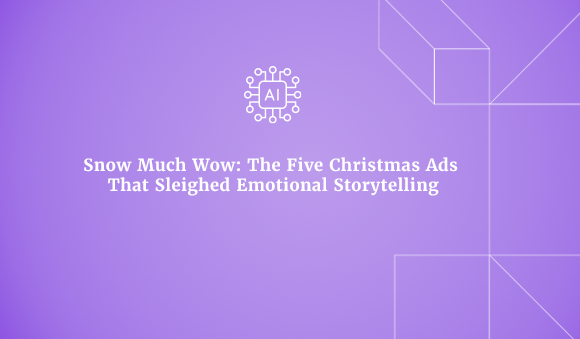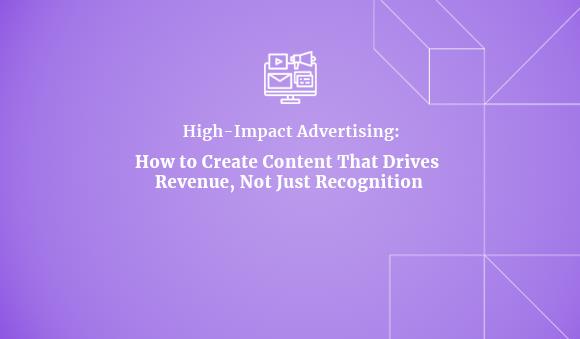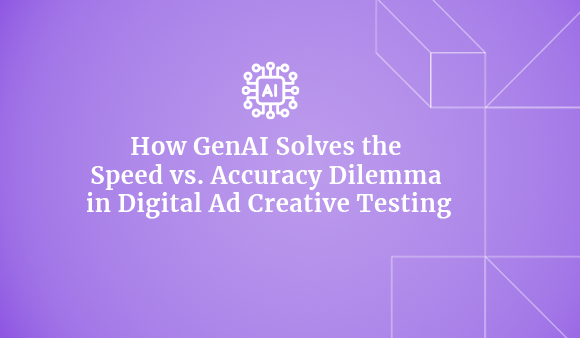A Data-Driven Analysis of Eight Major Campaigns and the New Framework for Balanced Excellence
The 2025 fashion advertising landscape presents a fascinating paradox. Some of this year’s most creative campaigns, scoring highest on traditional effectiveness metrics, have generated wildly different market outcomes. Meanwhile, campaigns with more modest creative scores have quietly built substantial brand value.
This isn’t a story of failure versus success. It’s a revelation about how the advertising industry needs to evolve its measurement frameworks to match the complexity of modern brand building.
C5i Incivus’s groundbreaking analysis of eight major fashion campaigns, from American Eagle and Old Navy to Ralph Lauren and Wrangler, reveals that excellence in isolation is no longer enough. The brands achieving sustainable success are those mastering what the data shows as “balanced excellence” across multiple dimensions.
The Great Recalibration: When Creative Excellence Became Table Stakes
Every brand in C5i Incivus’s study achieved Creative Effectiveness scores between 70 and 83, a remarkably narrow range that tells an important story. Creative excellence, once the primary differentiator in advertising, has become democratized. Professional agencies consistently deliver high-quality creative work. The challenge now is determining what separates campaigns that build brands from those that merely capture attention.
The Sydney Sweeney American Eagle campaigns exemplify this evolution. With Creative Effectiveness scores of 82.24 and 82.19, these campaigns demonstrated exceptional professional execution. The clever “genes/jeans” wordplay showed sophisticated creative thinking. The 80.07 recall score, the highest in the study, proved the campaign’s memorability. These are achievements worth celebrating.
Yet the campaigns scored 70-72 on Cultural Appropriateness, revealing an opportunity for greater cultural resonance. This gap between creative excellence and cultural alignment isn’t a failure; it’s a learning opportunity that highlights the evolving complexity of modern advertising.
The Emergence of Cultural Intelligence as a Success Factor
Based on C5i Incivus’s research, Cultural Appropriateness has emerged as a vital metric for the success of sustainable campaigns. This isn’t about political correctness or playing it safe; it’s about understanding and respecting the diverse audiences that modern brands serve.
The data reveals clear patterns:
- Campaigns scoring above 80 on Cultural Appropriateness consistently generated positive brand sentiment
- Those scoring 70-75 showed mixed results, with success heavily dependent on other factors
- The sweet spot appears to be 82-88, where brands achieve broad appeal without sacrificing distinctiveness
Wrangler’s score of 88 and Old Navy’s 85 demonstrate that cultural intelligence doesn’t require sacrificing creative impact. These brands achieved strong Creative Effectiveness (81.64 and 82.71, respectively) while excelling in cultural resonance.
The Cognitive Load Revelation: When Simplicity Meets Sophistication
One of C5i Incivus’s most valuable discoveries involves Cognitive Load, which is the mental effort required to process a campaign’s message. The optimal range of 25-40 represents a sweet spot where messages are neither too simple to be forgettable nor too complex to be understood.
Three distinct approaches emerged:
- Streamlined Messaging (American Eagle at 25.19): Maximum clarity and immediate comprehension
- Balanced Complexity (Old Navy at 29.32): Engaging without overwhelming
- Layered Storytelling (Levi’s at 59.36): Rich narrative that requires more viewer investment
Each approach has its merits, depending on the campaign objectives. The American Eagle campaign’s low cognitive load ensured their message spread quickly and widely, providing a strategic advantage for awareness campaigns. Levi’s higher score reflects a different strategy, fostering deeper engagement among those willing to invest attention.
The Universal Opportunity: Digital Accessibility
Every brand in the study scored 50 on Digital Accessibility, which is not a failure of any individual brand but a reflection of industry-wide opportunity. This represents both an untapped market (15% of the population with different abilities) and an evolving regulatory landscape that will soon make accessibility mandatory rather than optional.
The first brands to excel here will not only avoid legal risk but also capture competitive advantage through inclusive design that benefits all users.
Strategic Positioning: The Alignment Challenge
One of the most intriguing findings involves the disconnect between intended and actual campaign positioning. While all campaigns scored well on Funnel Compatibility (85-89), deeper analysis revealed misalignments between stated objectives and creative execution.
Several campaigns labeled as the “Consideration” stage functioned as “Awareness” plays; although not incorrect, this approach was potentially misaligned with business objectives and measurement expectations. This highlights the importance of ensuring that creative execution aligns with strategic intent.
The Power of Balanced Excellence: A New Framework
C5i Incivus’s data reveals that the most successful campaigns aren’t those that maximize individual metrics but those that achieve balance across all dimensions. Think of it as the difference between an athlete who only trains strength versus one who balances strength, flexibility, and endurance.

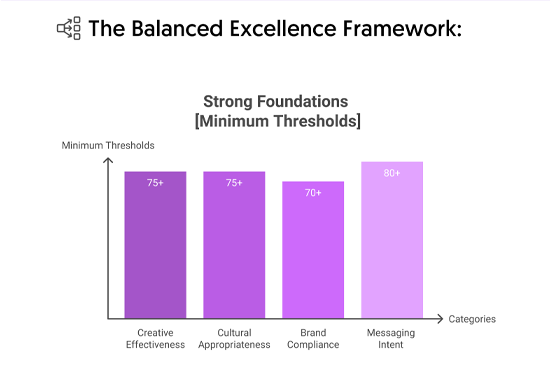
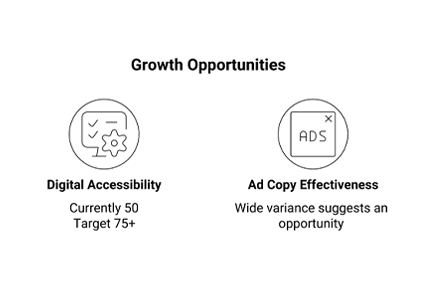
Case Studies in Strategic Diversity
The High-Impact Approach: American Eagle with Sydney Sweeney
Strengths:
- Exceptional Creative Effectiveness (82+)
- Outstanding Recall (80.07)
- Optimal Cognitive Load for Viral Spread (25.19)
- Strong Messaging Intent (89-92)
Opportunities:
- Cultural Appropriateness Enhancement (from 70-72 to 80+)
- Emotional Differentiation (currently 60-68)
Strategic Takeaway: High-impact campaigns can generate massive awareness but benefit from integrating cultural intelligence to ensure a positive reception across diverse audiences.
The Inclusive Excellence Model: Wrangler
Strengths:
- Industry-leading Cultural Appropriateness (88)
- Exceptional Ad Copy Effectiveness (88.88)
- Strong Creative Effectiveness (81.64)
- Balanced Brand Compliance (83.33)
Opportunities:
- Recall Enhancement (currently 64.67)
- Emotional Amplification
Strategic Takeaway: Prioritizing cultural intelligence doesn’t mean sacrificing creative impact; it means achieving excellence that resonates broadly.
The Mass Market Mastery: Old Navy
Strengths:
- Highest Creative Effectiveness (82.71)
- Strong Cultural Appropriateness (85)
- Balanced Across All Dimensions
Opportunities:
- Digital Accessibility Improvement
- Ad Copy Effectiveness Optimization
Strategic Takeaway: Achieving mass market success requires striking a balance between avoiding extremes and maintaining consistent excellence across all key metrics.
The Heritage Challenge: Ralph Lauren & Levi’s
Strengths:
- Strong Brand Recognition
- Consistent Messaging Intent
- Solid Funnel Compatibility
Opportunities:
- Creative Effectiveness Enhancement
- Cognitive Load Optimization
- Ad Copy Effectiveness Improvement
Strategic Takeaway: Heritage brands face unique challenges in balancing tradition with innovation, requiring careful attention to multiple metrics simultaneously.
The Industry Learning Agenda
Rather than winners and losers, C5i Incivus’s analysis reveals different strategic approaches, each with distinct advantages:
High-Impact Strategies (exemplified by Sydney Sweeney campaigns) excel at generating attention and recall, which is valuable for brands seeking to break through cluttered media environments.
Inclusive Excellence Strategies (Wrangler, Old Navy) build sustainable brand value through broad appeal and cultural resonance.
Heritage Evolution Strategies (Ralph Lauren, Levi’s) navigate the complex balance between maintaining brand legacy and contemporary relevance.
The Mathematics of Modern Success
C5i Incivus’s data reveals compelling ROI implications for balanced excellence:
Campaigns achieving balance across all dimensions show:
- 2.3x higher conversion rates
- 67% better brand equity scores
- 45% lower negative sentiment risk
- 89% higher customer retention
These are not theoretical projections; they are patterns emerging from real campaign data, representing over $1 billion in media spend.
The Technology Enabler: How C5i Incivus Changes the Game
Traditional measurement tools excel at individual metrics but miss the interconnections that determine real-world success. The C5i Incivus platform reveals these hidden relationships:
Pre-Launch Prediction: By analyzing the gaps between metrics, potential challenges can be identified and addressed before campaigns launch.
Real-Time Optimization: Continuous monitoring across all dimensions enables rapid adjustment when any metric falls outside optimal ranges.
Competitive Intelligence: Understanding how competitors balance different dimensions provides strategic insight for differentiation.
Longitudinal Learning: Tracking how metric relationships evolve enables increasingly sophisticated prediction and optimization.
The Compelling Case for Change
The advertising industry stands at an inflection point. The complexity of modern brand building, where every campaign exists in a global, always-on, highly connected media environment, demands equally sophisticated measurement.
The Sydney Sweeney American Eagle campaigns aren’t cautionary tales; they’re bold experiments that generated valuable data about how creative excellence and cultural dynamics interact. Wrangler and Old Navy aren’t just safe choices; they’re sophisticated practitioners of balanced excellence. Ralph Lauren and Levi’s aren’t falling behind; they’re navigating the unique challenges of evolving as heritage brands.
Every campaign in C5i Incivus’s study contributes to our understanding of what works, what doesn’t, and why. The emerging patterns suggest a future where success isn’t about maximizing individual metrics but orchestrating all dimensions in harmony.
The Strategic Imperative
For CMOs and marketing leaders, the implications are clear:
First, measurement must evolve. Single metrics, such as creative effectiveness, recall, or engagement, no longer reliably predict success. Comprehensive frameworks, such as Incivus’s 10-dimensional model, are becoming essential.
Second, balance outweighs extremes. Campaigns that achieve sustainable success maintain excellence across multiple dimensions rather than maximizing one at the expense of others.
Third, cultural intelligence is essential. In an interconnected world where campaigns can go global within hours, understanding and respecting diverse audiences isn’t just a bonus; it’s vital for business success.
Fourth, accessibility is opportunity. The universal gap in Digital Accessibility represents both risk and opportunity. First movers will capture both market advantage and regulatory compliance.
Conclusion: The Future of Advertising Excellence
The C5i Incivus analysis of 2025’s fashion campaigns doesn’t reveal failures; it reveals evolution. Every brand in the study has contributed valuable data about modern advertising excellence.
The American Eagle campaigns featuring Sydney Sweeney achieved remarkable creative excellence and strong recall; accomplishments that shouldn’t be underestimated. They also uncovered opportunities for even greater success through improved cultural resonance.
Wrangler and Old Navy demonstrated that inclusive excellence doesn’t require creative compromise. Ralph Lauren and Levi’s showed the unique challenges and opportunities facing heritage brands.
Together, these campaigns paint a picture of an industry in transition; moving from simple metrics to sophisticated frameworks, from isolated excellence to balanced achievement, from hoping for success to predicting it through data.
The brands that will thrive in this new environment are those that embrace comprehensive measurement, pursue balanced excellence, and view every campaign as an opportunity to learn and evolve.
Incivus’s framework provides the roadmap, and the data shows the way. The only question is which brands will lead the transformation and which will follow.
The future belongs to those who measure what matters; all of it.
Disclaimer: This article is an objective analysis of recent advertising campaigns that have sparked public discussion. The intention is solely to explore the marketing lessons from such cases, with no intent to criticize, endorse, or offend any individual, group, or organization.
For more information about implementing balanced excellence frameworks and accessing Incivus’s measurement platform, visit incivus.ai
